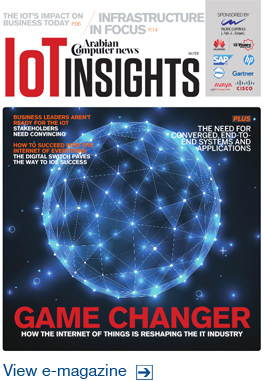
Press Releases
Total Control
Convergence is needed for a successful IoT deployment, and Pacific Controls provides this with its end-to-end solutions focused on unlocking value from IoT technologies.
Many diverse businesses are now discovering the concept of connectivity and smart services. The opportunities driven by this trend are enormous and everywhere. However, the existing tools that support the development of smart systems are not providing the full measure of value they could. The next chapter in the smart sensors, machines and systems arena will be driven by new tools and platforms that will help product OEMs, service providers and enterprise users realise more value by providing a unified solution framework that strips out unnecessary complexity and costs and, ultimately, leverages intelligence in devices, networks and cloud-based services.
Machine communications or the Internet of Things and cloud computing are combining to create new modes of asset intelligence, collaboration and decision making. This convergence is informing significant new capabilities in which inputs from machines, people, sensors, video streams, maps, news feeds, and more are digitised and placed onto networks. These inputs are integrated into systems that connect people, processes, and knowledge to enable collective awareness, efficiencies and better decision making.

What is important about this next wave of M2M, IoT and smart systems is the combined impact of these technologies. While there is standalone value in each of the innovations, it is the combination of all three technologies that will allow computing technologies to inform real-world physical systems.
Pacific Controls is positioning itself as an end-to-end service provider for the delivery of IoT services. The company says that, through these services, enterprises and government organisations will be able to take advantage of the impact that M2M, the IoT, and smart systems are having on the technology world.
“Through our experience, it is without doubt that IoT is set for a drastic radical change in the whole business fraternity in how business in conducted as a whole. From having a product-based orientation, business are set to move towards a service orientation in all aspects of how business is conducted and clients are served,” explains Dilip Rahulan, executive chairman at Pacific Controls Systems.
“To deploy IoT solutions successfully, the businesses would have to redefine the deliverables. Handling large volumes of data accumulated through IoT deployments would be a high area of focus, without which the plot would be lost. The term big data analytics would become an acronym to deliver meaningful and useful data. Businesses should be able to use the big data through intelligent, accessible and actionable enterprise-level platform deployments. Pacific Controls’ Galaxy platform has been proven to handle big data analytics across various verticals of business deployments.”

“Businesses should be able to use the big data through intelligent, accessible and actionable enterprise-level platform deployments. Pacific Controls’ Galaxy platform has been proven to handle big data analytics across various verticals of business deployments.”
Dilip Rahulan
Executive Chairman & CEO of Pacific Controls
Indeed, according to Rahulan, Pacific Controls’ edge devices and secure embedded software are the best of class for enabling smart connected devices and systems. And the Pacific Controls Cloud Services infrastructure, delivered using partners like Microsoft and Fujitsu, are the most advanced technology solutions in the market, he adds. Meanwhile, the Pacific Controls Galaxy 2021 device-to-enterprise platform which he alludes to comes with built-in security and artificial intelligence, enabling end-to-end services for a smart city deployment.
According to a Pacific Controls whitepaper, convergence is now driving value when it comes to the Internet of Things. The vendor points out that the development of the IoT’s critical elements, such as smart connected systems embedded software, device connectivity and cloud computing, has evolved within separate cultures and silos. This is hardly useful when it comes to defining and deploying real-world technology to deliver smart connected systems innovation. M2M is a classic example of this; it is a story of “piece-meal” technologies cobbled together from disparate supply-side vendor segments that have, for the most part, never really spoken, communicated or learned from each other.

Convergence changes all of this, and according to Pacific Controls, the company has achieved the sort of convergence necessary to put into action real IoT deployments. With these systems, Pacific Controls says that it has recognised the fact that sensors and machine systems require new development and integration tools, and through this, it can deliver new user and customer value. According to Rahulan, there is enormous potential when it comes to the value offered by the Internet of Things – if things are deployed correctly.
“Accessibility and meaningful data would be the key to gain the attention of consumers for IoT. Having large volumes of data which would not mean anything to a consumer would result in the failure of an IoT deployment. The latest technology stacks need to be embedded into the data analytics and UI builders within enterprise systems to engage in assuring that the data representation gains attention of the consumers. And predictive analysis results of big data analytics would be key to providing consumers with future ready data for planning and budgeting growth and to meet future requirements,” he says.
Indeed, Rahulan goes as far as to say that this sort of thinking can lay the foundation for the smart city concept.
“The fundamental of any smart city is all about real-time data analytics facilitating business intelligence and Integration of services. This capability can be enabled by having connectivity to potentially all of the assets and services of the city to facilitate managed services to the residents, businesses and government. This process is achievable only through IoT deployments - It is only through the enablement of IoT that anyone can deliver a smart city,” he explains.
“Through our experience, it is without doubt that IoT is set for a drastic radical change in the whole business fraternity in how business in conducted as a whole. From having a product based orientation, businesses are to set move towards a service orientation in all aspects of how business is conducted and clients are served.”
When it comes to which industries will be the trailblazers of IoT in the Middle East, the government is, of course, at the top of the list. However, Rahulan says that other industries are also looking to leverage the power of Pacific Controls’ technologies to glean benefits from the IoT. He says that the immediate impact will be felt in the transportation, safety and security, and healthcare industries. Though he adds that hospitality, logistics and construction firms will also begin to feel the effects of the IoT sooner rather than later.
However, the Middle East still faces challenges when it comes to the adoption of IoT technologies. According to Rahulan, the lack of a clear-cut deployment roadmap is one of the barriers that may hinder IoT adoption in this region. Aside from this, he cites a lack of management of government-level support, and a lack of prior exposure to M2M deployments as other challenges that may dissuade enterprises from buying into the IoT. Finally, he says that security could also be a challenge.
Indeed, on the security front, the IoT has come in for a lot of criticism, given how young it is as a concept. And Rahulan admits that, when deployments are not done properly, with security in mind, it could well be true that the IoT could pose a security-related risk to the enterprises exploring it. However, he adds that there are measures that enterprises can take in order to ensure the safe deployment of IoT technologies.
“The right way to mitigate any possible security risks is to pool sufficient expertise and infrastructure to meet the needs to ensure security. Safety assurance needs to be prioritised in a structured cloud deployment environment.”
“If it is not deployed in a proper secured data infrastructure with resilience and a strong firewall solution, surely the IoT represents a security risk. The right way to mitigate any possible security risks is to pool sufficient expertise and infrastructure to meet the needs to ensure security. Safety assurance need to be prioritised in a structured cloud deployment environment. Pacific Controls’ strategy is to use artificial intelligence in order to address and resolve security risks,” he says.
Without an end-to-end solution provider, however, safely deploying IoT technologies is still difficult for many organisations. Much of this has to do with the fact that there are no set standards around IoT protocols, meaning that each vendor or technology provider is, essentially, going it alone in the market.
However, things are changing on that front, and Rahulan says that Pacific Controls is working to develop IoT standards to give end users greater peace of mind when exploring the trend.
“Pacific Controls Is actively involved with the IoT fraternity in developing and supporting new protocols and new standards for hardware and software,” he says.
Rahulan adds that Pacific Controls is a founding member and supporter of Project Haystack, an open-source initiative to streamline working with data from the Internet of Things. The project standardises semantic data models and web services with the goal of making it easier to unlock value from the vast quantity of data being generated by smart devices. Applications include automation, control, energy, HVAC, lighting, and other environmental systems.
ITP.net
July 2015
